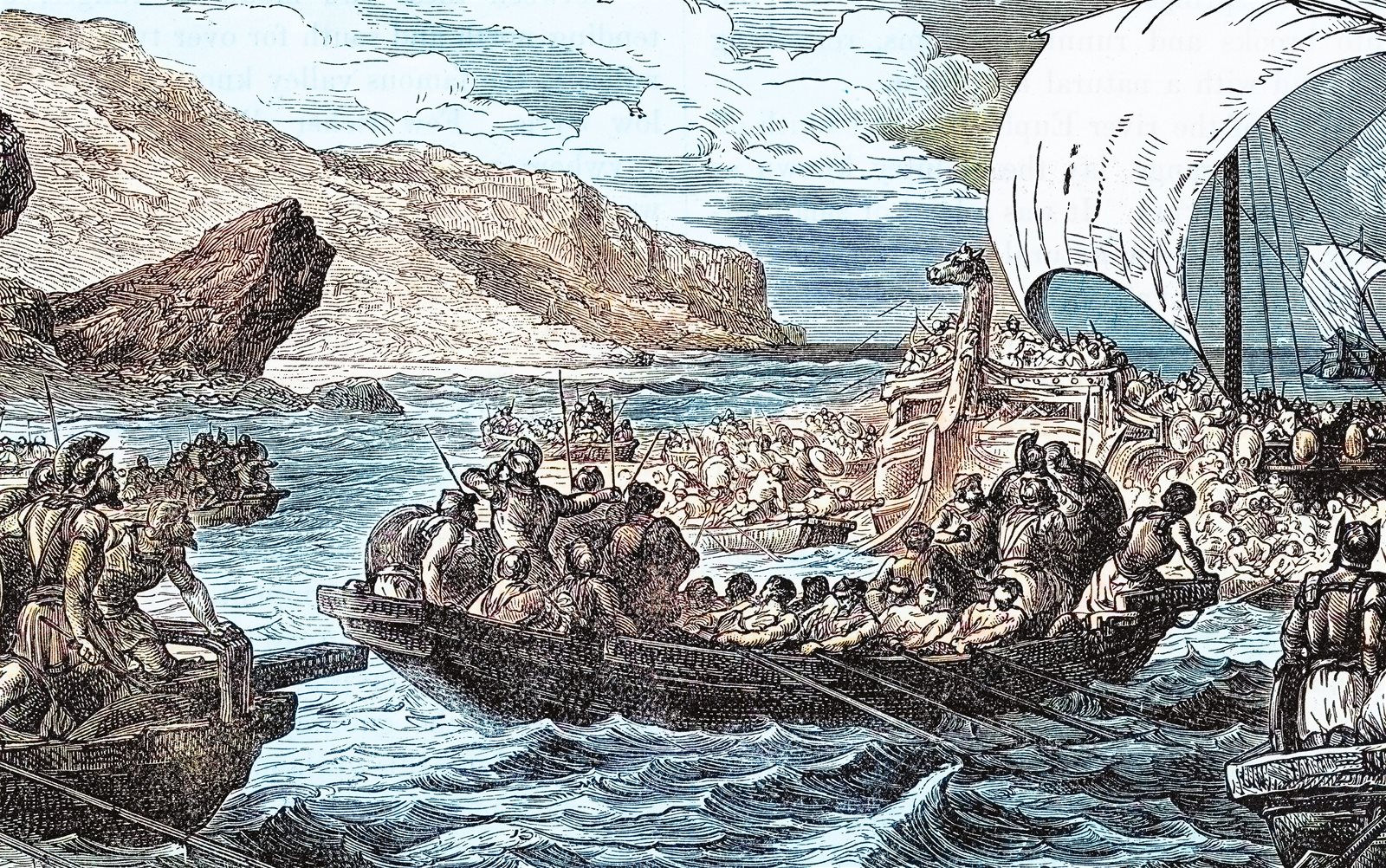
© Getty Images
The Phoenicians seem to have originated as a Semitic people from the Levant (equivalent to the modern coasts of Syria, Lebanon and Israel), stretching 320 kilometres from ancient Aradus (modern Arwad, Syria) to Mt Carmel and the town of Dor in Northern Israel. They were famed sea travellers and traders whose reach stretched throughout the Mediterranean to Spain, the western coast of Africa, and beyond. One anecdote about the extent of Phoenician mercantile ambition is that the murex sea snail – which was the source of the specific colour purple for dyes in the ancient world (known as Tyrian or Royal purple), and only found along the Phoenician coastline – was worked almost to extinction. Some theories hold that the Greek word Phoenicia (phoinix) itself meant ‘land of purple’ (the Greek word for the purple was phoinikes) – we don’t know for certain what they referred to themselves as, probably as inhabitants of each particular city. The Phoenicians had begun trading the murex dye in 1200 BCE, perhaps centuries earlier.
The Age of the Phoenicians is usually dated between around 1200 and 550 BCE, although Phoenician influence lasted into the 2nd century BCE. From around 550 BCE, however, Carthaginian civilisation took over as the dominant influence, especially in the western Mediterranean. Carthage was the most famous Phoenician colony (most matters related to the Carthaginians continued to be known as Poeni or Punic after their Phoenician origins – such as the various Punic wars fought with Rome).